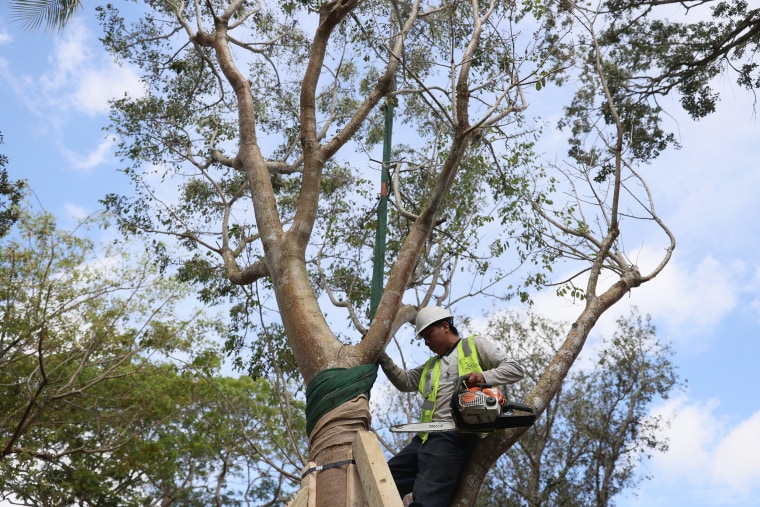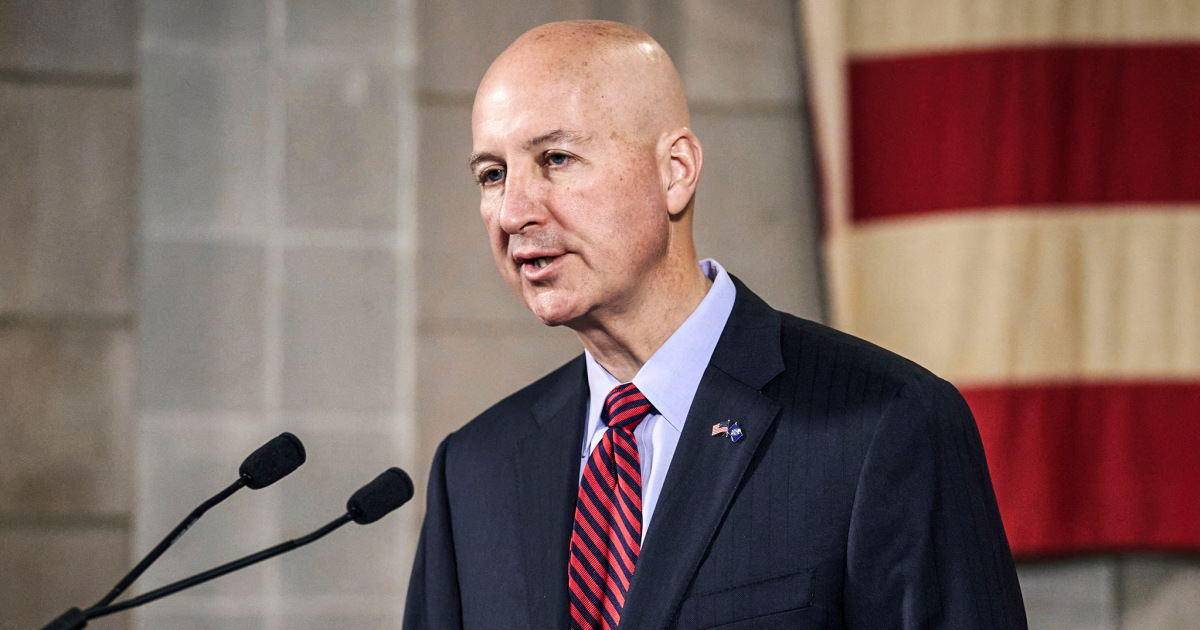Cities look to trees to combat heat islands, but growth is slow
Cristina Velazquez says she never played outside as a child because it was too hot and the parks were too dangerous.
Velazquez, 24, grew up in Westlake, a densely populated downtown Los Angeles neighborhood that, like many inner-city areas, has little greenery or green space. The community predominantly Latino and more than 20 percent of its inhabitants live in poverty. As she rode the bus to the other side of the city, she recalled seeing the children playing together in the shade of a tree.
“When you watch TV and you see a show with young children playing on the street,” said Velazquez, a participant in the Los Angeles Tree Ambassador Program, which recruits people from communities directly. need more trees to access the environment in their vicinity. “That’s a big difference. Like you can really tell about your childhood, even like how a few trees can make a difference. “
Many major US cities, including Los Angeles, Denver, Phoenix, Chicago, and Boston, are working to close the equity gap in canopy cover through volunteer tree-planting events and partnerships. community and green job programs.
But those efforts face challenges, including a number of physical, social and financial barriers that stand in the way of making canopy cover equitable.
Physical barriers tend to be the hardest and most expensive obstacles. City planners and urban rangers must navigate built-in infrastructure to make room for trees. Sometimes this involves cutting sidewalks, which is more expensive than planting trees where green space is available.
According to Ian Leahy, vice president of urban forestry at American Forest, a nonprofit group dedicated to preserving forests in the United States, it can cost around $300 to pour enough concrete for a tree.
“It’s great to plant trees on a large open field, but sometimes the tree needs most is a building, a sidewalk, a road, for example there is not much space,” he said.
Severe heat in the cities is a major problem worldwide, and underserved urban communities such as West Lake may be at particular risk from the urban heat island effect, which is when an area retains more heat due to a lack of air. green space and higher density of sidewalks and buildings. It’s a growing problem in a the world warms up – extreme heat was deadliest U.S. weather-related risks
This has brought new scrutiny into the lack of green space in many poor urban areas. Search Shows that historically highlighted communities, which are Black and brown communities with little investment due to discriminatory practices, face threats of more extreme temperatures largely due to lack of canopy.
One solution seems simple: plant more trees.

Canopy cover can significantly reduced temperature, sometimes close to 10 degrees F. One recent research from the International Journal of Biometeorology found that 1 in 4 lives in Los Angeles could be saved during extreme heat events with more canopy, as well as other cooling methods in place.
But growing trees in cities is not as easy as one might think.
Urban foresters have to be creative with the space available, but urban forestry is a less hired industry, often with one or two people working on complex schemes within city government. city, and major labor shortages occurred at the tree care level. In some smaller cities, like Jackson, Mississippi, nonprofit groups have had to fill the void. In general, it is difficult for cities to maintain existing trees, let alone plant more.
“One of our biggest obstacles, people didn’t know our industry existed,” Leahy said.
Nationwide, efforts are underway to recruit more diverse workers into the field. Denver will pilot a pre-apprenticeship program this summer to train formerly incarcerated people in urban forestry jobs. This spring, Los Angeles graduated from the first class of the Trees Ambassador Program, which directly recruits people from communities in need of more trees.
Velazquez is one of the fresh graduates. On the show, she went door-to-door in her neighborhood asking residents if they would water newly planted trees in the area, many of whom answered no. This is not an uncommon response, especially in historically disadvantaged communities.
She said that in her neighborhood, some residents believe it would be too much of an expense, others simply don’t have time between work and taking care of their families. But many people don’t trust the city’s ability to properly care for the trees as they grow. She said many old trees in the neighborhood are not maintained.
“It’s a very old town. Basically, all the trees that we’ve been there for decades,” Velazquez said. “But it’s also a residential area that lacks resources, so basically the city doesn’t care about them. So we have a lot of big trees that obstruct power lines, trees that are dying or dead, trees that are close to touching apartment buildings, soaring on the streets.”
Taking care of the trees is now on the agenda of Los Angeles Sheriff Rachel Malarich. While tree planting has slowed since the start of the pandemic, she’s looking for sustainable solutions to the city’s canopy inequality.
“The important thing to keep in mind when we think about canopy equity is that it can’t just be planting trees,” she said. “I have continued to remind people that without good tree preservation policies and good care practices, we will lose canopy while we are trying to add canopy through planting.”
On the opposite coast, New York City borough presidents are looking to increase canopy coverage with their “Million More Trees” campaign. Between Bloomberg and the de Blasio administration, the city planted 1 million trees — a goal that regional presidents want to reiterate. Mayor Eric Adams has yet to respond to the proposed project.
Nature Conservancy, a global environmental nonprofit group, release a report in November showed that despite previous planting efforts, canopy cover remained unequal in New York City.
Arif Ullah, chief executive officer of South Bronx Unite, a community advocacy group, said he wants more trees to help reduce massive health inequalities in the Bronx. County has highest rate childhood asthma and its prevalence nationwide.
“The air we breathe is killing us,” says Ullahhe.
Heat-related illness and death is also a concern in New York City’s black communities in New York City, as well as in cities across the country. Each year, the heat sends 450 New Yorkers into the emergency room. From 2010 to 2019, more than 100 New Yorkers there have been heat-related deaths, of which 43 percent were Black.
In LALos Angeles, there are more than 3,000 heat-related deaths in the same time frame, according to a LA time investigation.
Malarich said she is working to shift the focus from the fact that trees in cities are a luxury to plants necessary for a healthy life.
“Trees are seen as a beauty, a comfort that a wealthy community can have. “Oh,” it’s nice to have. “” said Malarichshe. “Trees are not ‘nice to have.’ They need to have. “
at Blogtuan.info – Source: nbcnews.com – Read the original article here

